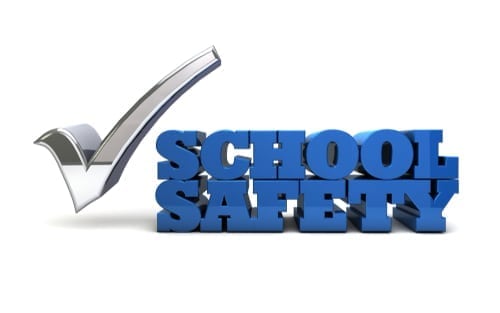While learning may sit at the top of your district’s needs hierarchy, the health and safety of the school community serve as its foundation. In addition to increasing teacher effectiveness and decreasing teacher turnover, professional development (PD) provides the only sure way to implement appropriate school-wide safety strategies and processes. Not doing so can prove harmful – and even deadly.
How can you ensure that your safety PD program addresses your teachers’ needs and prepares them to handle safety issues confidently? Use these best practices to develop effective safety PD.
1. Include actionable training
Incorporate your safety PD in the form of significant, actionable training throughout the entire school year. Consistent, ongoing opportunities to develop skills and attitudes require time to reflect and integrate into everyday practice.
2. Incorporate a three-phase training program
Plan all phases of effective training based on the following components: planning, implementation, and evaluation. The evaluation component ensures that training will change over time as you receive and utilize feedback. Training will also vary based on constitutional, societal, and environmental factors.
3. Perform a needs analysis
Identify the specific safety needs and goals of your school and district. Involve your faculty and administrative staff in the overall analysis to ensure that the provided training is revelatory to all staff.
4. Mobilize an experienced team
Assemble and assign experienced members of your faculty and administrative staff to develop the PD. Choose a lead on the project who can build consensus, has broad experience developing PD, and who can keep the project moving toward critical deadlines completion for implementation and evaluation.
5. Tap into resources
Develop a group understanding of safety issues in schools by using resources from organizations devoted to safety PD, such as the Security Industry Association (SIA). The SIA recommends the Partner Alliance for Safer Schools (PASS) and its partner Safe and Sound Schools for speakers, programs, resources and also provides best practices and guidelines for school security.
6. Include experts
Involve recognized experts in the safety community. Their expertise will allow you to include lessons learned and stimulate conversations about safety content. For example, you could call upon the Crisis Prevention Institute (CPI) for safety assistance. The CPI is an organization dedicated to providing resources for effective training methods and managing safety issues.
Effective safety PD should be proactive and preventative. It lays the foundation for learning: creating a favorable school climate and culture, preventing bullying from escalating to violence, reducing student and teacher trauma, and saving lives.





